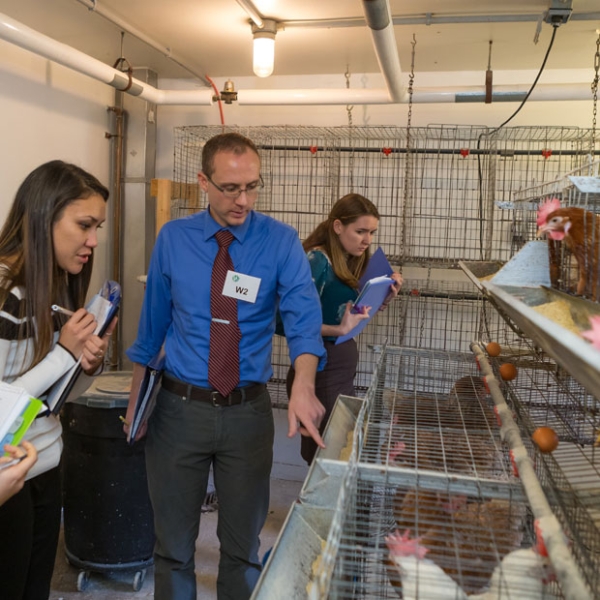Antimicrobial resistance: Slowing and limiting its emergence and spread
We’re all aware of the health risks antimicrobial resistance poses for animals and people. As a practice owner, I have been struck by the number of antimicrobial-resistant bacterial infections my team and I have seen in our patients. Seeing the problem firsthand caused me to devote this column to it, in the hope that we all become more thoughtful about which antimicrobials we prescribe and when we prescribe them.
When I prescribe antimicrobials, I make sure to fully educate my clients on the importance of sticking to the recommended regimen to help ensure those drugs are used in a judicious manner.
AVMA’s commitment: Practical resources to support you
The AVMA is committed to providing members with the information and resources we all need to make the best decisions about antimicrobial use as we care for patients and simultaneously protect public health.
In August, we published the first report describing the current status of antimicrobial-resistant bacteria affecting various animal species in the United States.
Over the past several months, the AVMA, advised by our Committee on Antimicrobials, has been working intensively to address the critical issue of antimicrobial use and resistance.
In August, we published the first report describing the current status of antimicrobial-resistant bacteria affecting various animal species in the United States. The report, “Antimicrobial Resistant Pathogens Affecting Animal Health in the United States,” is the newest addition to the AVMA’s collection of interdisciplinary resources for combating antimicrobial resistance.
The report was developed in collaboration with many of our allied veterinary associations, with contributions from nearly 50 microbiologists, epidemiologists, and species experts. It examines bacteria of concern and describes actions that veterinary teams, producers, breeders, and animal owners can take to slow and limit the emergence and spread of antimicrobial resistance.
Along with the full report, AVMA members can download a variety of sharable materials extracted from the larger document that will help support your stewardship efforts. They include an antimicrobial stewardship poster, a table of antimicrobial-resistant pathogens, and species-specific “report cards” with information about antimicrobial-resistant bacteria affecting different kinds of animals.
This report is a snapshot of the current landscape, and the AVMA will continue to monitor trends in antimicrobial resistance to ensure that AVMA members have the tools needed to make the best stewardship decisions for patients.
Representing veterinary medicine in federal policy planning
AVMA is also working with partners in the federal government to support stewardship. In October, we attended the U.S. Food and Drug Administration’s five-year strategic plan public meeting related to the National Antimicrobial Resistance Monitoring System (NARMS). NARMS is a collaboration among state and local public health departments, the U.S. Centers for Disease Control and Prevention (CDC), the FDA, and the U.S. Department of Agriculture to track changes in the antimicrobial susceptibility of certain intestinal bacteria found in people, retail meats, and food animals.
We’re also pleased that Dr. Joni Scheftel, chair of the AVMA Committee on Antimicrobials, has been chosen to serve on the Presidential Advisory Council on Combating Antibiotic-Resistant Bacteria as a nonvoting liaison member. She will serve a two-year term on the council, which provides advice, information, and recommendations on programs and policies related to antibiotic resistance.
International partnerships further support stewardship
As veterinarians, we are at the forefront of fighting antimicrobial resistance in animals, and we play a critical role in the overall health of animals, humans, and the environment.
AVMA’s ongoing antimicrobial work also includes international collaboration. The AVMA recently submitted comments on draft guidelines developed by the Ad hoc Codex Alimentarius Intergovernmental Task Force on Antimicrobial Resistance. The AVMA is a stakeholder to the U.S. delegation of the task force, which has been working to revise the Code of Practice to Minimize and Contain Antimicrobial Resistance and draft guidance for integrated monitoring and surveillance of foodborne antimicrobial-resistant bacteria.
Codex Alimentarius standards relating to food production and food safety influence federal regulations and policy in the United States and other nations. With AVMA members serving in all facets of veterinary medicine, it’s both important and necessary for the Association to be engaged and contribute veterinary perspective.
Tools and resources to support you
I encourage you to visit avma.org/Antimicrobials to find information about veterinarians’ role in ensuring continued antimicrobial effectiveness; definitions of antimicrobial stewardship for veterinarians; material on what constitutes therapeutic use of antimicrobials (treatment, control, and prevention); practical resources to use in your daily practice; and AVMA policies related to antimicrobial use and resistance.
Slowing and limiting the emergence and spread of antimicrobial resistance to maintain the effectiveness of these valuable drugs requires widespread engagement from across the One Health spectrum, especially among animal owners and leaders in veterinary medicine and public health.
As veterinarians, we are at the forefront of fighting antimicrobial resistance in animals, and we play a critical role in the overall health of animals, humans, and the environment. Let’s continue to be good stewards and do our part to ensure judicious use, effectiveness, and availability of these critically important drugs.




Comments
Add New Comment